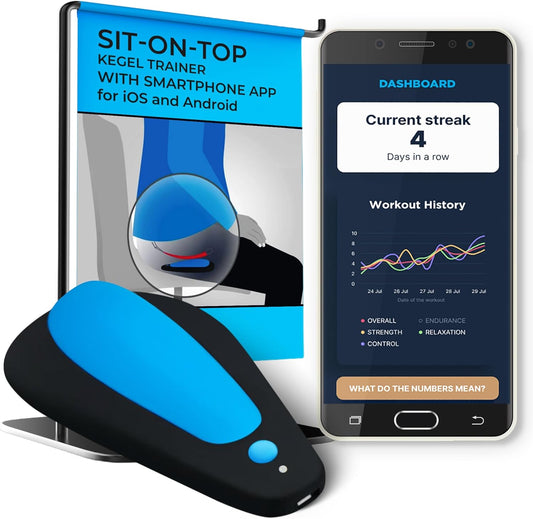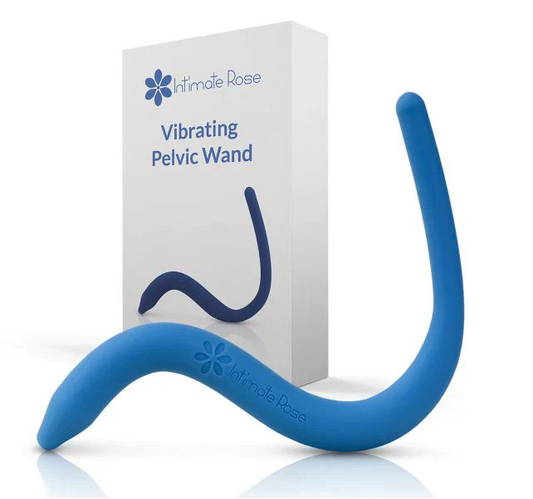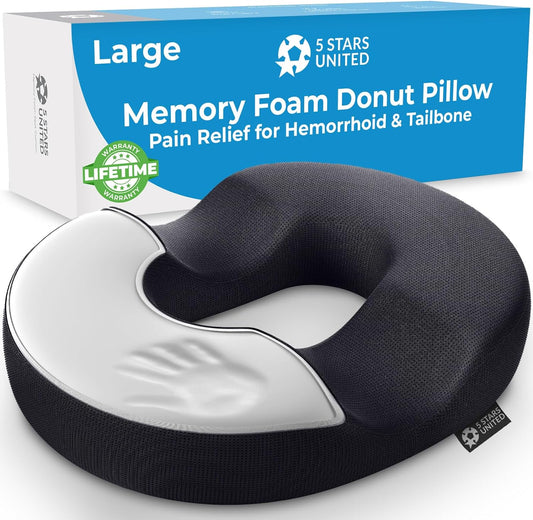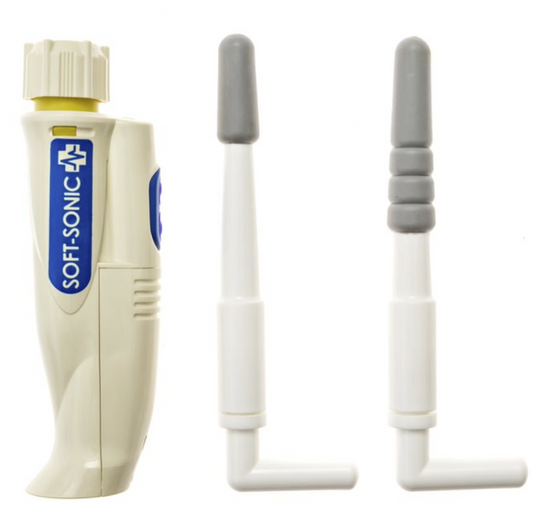
How to Use a Prostate Massager for Maximum Health Benefits (Not Just Pleasure!)
Share
What Is a Prostate Massage?
Prostate massage involves the gentle stimulation of the prostate gland through the rectal wall. This walnut-sized gland is located between the bladder and the penis, just in front of the rectum, making it accessible through the anal passage.
Medical vs. Recreational Prostate Massage
Medical prostate massage is performed by healthcare professionals to help diagnose or treat certain prostate conditions with the use of prostate massage therapy. The physician uses a gloved finger to examine and massage the prostate, which can help drain fluids from the prostate ducts and relieve symptoms of certain conditions.
Recreational prostate massage is performed privately for wellness benefits or pleasure. Modern prostate massagers are specially designed devices that allow individuals to safely stimulate their prostate at home. These devices come in various shapes and designs, but all feature a curved shape to effectively reach and stimulate the prostate gland.
How Prostate Massagers Work
Prostate massagers are designed with an anatomical curve that allows them to properly contact the prostate when inserted rectally. Most massagers work in one of two ways:
-
Manual massagers rely on physical manipulation, where the user or a partner moves the device to create pressure against the prostate.
-
Electronic massagers like the sonic prostate massager use vibration technology to stimulate the prostate without requiring continuous manual movement, offering consistent stimulation that may enhance both health benefits and comfort.
The Health Benefits of Prostate Massage
Beyond pleasure, regular prostate massage may offer several health advantages:
-
Improved Circulation: Massage increases blood flow to the prostate, which can deliver more oxygen and nutrients while removing waste products.
-
Reduced Inflammation: Studies suggest that gentle massage may help reduce inflammation in cases of non-bacterial prostatitis.
-
Better Urinary Function: Regular massage may help alleviate mild urinary symptoms by reducing prostate swelling that can restrict urine flow.
-
Fluid Drainage: Massage can help express prostatic fluid, clearing the prostate ducts and potentially reducing the risk of blockages.
-
Pelvic Floor Relaxation: The massage process can help relax tight pelvic floor muscles, which may contribute to prostate discomfort.
Can Prostate Massage Reduce the Risk of Prostate Issues?
While more research is needed, some evidence suggests prostate massage may play a role in proactive prostate health:
Prostatitis: Regular massage may help alleviate symptoms of chronic prostatitis/chronic pelvic pain syndrome by improving drainage and reducing inflammation. A study published in the Journal of Urology found that men who performed regular prostate massage in conjunction with other treatments experienced greater symptom improvement than those who did not include massage.
Benign Prostatic Hyperplasia (BPH): By potentially improving blood flow and reducing inflammation, prostate massage might help manage mild symptoms of an enlarged prostate, though it's not a replacement for medical treatment.
Prostate Cancer Risk: While no direct link has been established between prostate massage and cancer prevention, the improved circulation and drainage could theoretically support overall prostate health. However, it's important to note that regular prostate cancer screenings remain the most effective preventive measure.
Prostate Massage for Erectile Dysfunction and Impotence
The prostate plays a significant role in sexual function, and massage may offer benefits for some men experiencing erectile difficulties:
Improved Blood Flow: Prostate massage increases blood circulation to the entire pelvic region, which may support better erectile function.
Nerve Stimulation: The prostate contains numerous nerve endings that, when stimulated, can strengthen the neural pathways involved in arousal and erection.
Psychological Factors: For some men, becoming more familiar and comfortable with their bodies through prostate massage can reduce anxiety around sexual performance.
A small study published in the International Journal of Impotence Research found that some men with erectile dysfunction who incorporated prostate massage into their wellness routine reported improvements in erectile function, though results varied significantly between individuals.
When Would a Doctor Recommend a Prostate Massage?
Medical professionals might suggest prostate massage in specific circumstances:
Chronic Prostatitis: For some men with chronic non-bacterial prostatitis, doctors may recommend prostate massage as part of a multimodal treatment approach to relieve symptoms.
Prostatic Fluid Collection: To obtain prostatic fluid samples for testing, doctors may perform prostate massage to express fluid for analysis.
Prostate Congestion: When there's evidence of prostatic fluid buildup, a healthcare provider might suggest massage to help drain the prostate and relieve discomfort.
It's important to understand that medical prostate massage performed by a healthcare provider differs from self-administered massage with a device. Medical massage is typically briefer and specifically targeted toward diagnostic or therapeutic goals, while home use with a massager like the sonic prostate massager allows for regular wellness sessions.
How to Use a Prostate Massager Safely and Effectively
To maximize health benefits while ensuring safety, follow these guidelines for using a prostate massager.
Choosing the Right Prostate Massager
Selecting the appropriate massager is crucial for both comfort and effectiveness:
Material Safety: Choose massagers made from body-safe, non-porous materials like medical-grade silicone, which prevents bacterial growth and is easy to sanitize.
Size Considerations: Beginners should start with smaller, slimmer models and gradually work up to larger sizes as comfort allows.
Manual vs. Electronic: While manual massagers offer greater control, electronic options like the sonic prostate massager provide consistent stimulation without requiring hand manipulation, which can be beneficial for therapeutic purposes.
Features for Health Benefits: Look for massagers with multiple intensity levels and patterns, which allow you to customize stimulation based on your comfort level and therapeutic needs.
Step-by-Step Guide to Using a Prostate Massager
1. Preparation
Hygiene First: Clean the anal area thoroughly with mild soap and warm water. Some users prefer to use an enema for deeper cleaning 1-2 hours before using a massager, though this isn't strictly necessary.
Create a Relaxing Environment: Stress and tension can make insertion difficult and reduce the effectiveness of massage. Ensure privacy and create a calm atmosphere with comfortable temperature and perhaps soft music.
Mental Preparation: Take slow, deep breaths to relax your body, particularly your pelvic floor muscles. Tensing will make insertion uncomfortable and reduce therapeutic benefits.
Lubrication: Apply a generous amount of lubricant to both the massager and your anal area. For silicone toys, use only water-based lubricants, as silicone-based products can degrade the material.
2. Finding the Prostate
Positioning: For beginners, lying on your side with knees bent toward your chest often provides the easiest access. Alternative positions include lying on your back with legs raised or kneeling.
Anatomical Guidance: The prostate is located about 2-3 inches inside the rectum toward the navel. You'll know you've found it when you feel a rounded, somewhat firm bulb about the size of a walnut.
Initial Contact: Start by gently massaging the external area (perineum) to relax the muscles before attempting insertion.
Gentle Insertion: Insert the tip of the well-lubricated massager slowly, using gentle pressure. Never force entry. Pause if you feel discomfort, and continue only when your muscles relax.
3. Techniques for Effective Stimulation
Gentle Pressure: Once the massager is positioned against the prostate, apply gentle pressure. For health benefits, lighter pressure is often more effective than firm pressure, which is more associated with pleasure.
Rhythmic Movements: If using a manual massager, try small, gentle circular motions or a subtle "come hither" motion. Electronic massagers like the sonic prostate massager will provide this stimulation automatically.
Pattern Variation: For electronic massagers, start with the lowest setting and gradually increase intensity as comfortable. Different patterns may provide different therapeutic benefits—steady vibration is often best for relaxation, while pulsing patterns may help with fluid expression.
Breathing Coordination: Synchronize your breathing with the massage. Deep inhales and exhales can enhance relaxation and the therapeutic effects.
4. Duration & Frequency
Session Length: For health purposes, sessions typically last 10-20 minutes. Longer isn't necessarily better, especially for beginners.
Recommended Frequency: Most health practitioners suggest 1-3 times per week for potential therapeutic benefits, though this can vary based on individual needs and responses.
Consistency: Regular sessions are more likely to provide health benefits than occasional use.
External vs. Internal Prostate Massage: Which One Is Right for You?
Prostate massage can be performed either externally or internally, each with distinct advantages.
External Prostate Massage
External massage involves applying pressure to the perineum (the area between the scrotum and anus) to indirectly stimulate the prostate.
Benefits:
-
Non-invasive and more comfortable for beginners
-
No internal hygiene concerns
-
Easier to incorporate into daily routine
-
Good option for those with rectal health issues that contraindicate internal massage
Effectiveness: While external massage can provide some benefits, research suggests it's generally less effective than internal massage for therapeutic purposes because the pressure is less direct and precise.
Internal Prostate Massage
Internal massage involves direct stimulation of the prostate through the rectal wall.
Benefits:
-
More direct contact with the prostate
-
Greater potential for therapeutic benefits
-
More effective for expressing prostatic fluid
-
Better for addressing specific areas of tension or congestion
Considerations:
-
Requires more preparation
-
May feel invasive for beginners
-
Requires strict hygiene practices
Making Your Choice
If you're new to prostate massage or have concerns about internal stimulation, beginning with external massage is perfectly acceptable. Many men eventually transition to internal massage using a specially designed device like the sonic prostate massager once they become more comfortable with the practice.
For therapeutic purposes, internal massage generally offers more comprehensive benefits, but the best approach is the one you'll maintain consistently and comfortably.
Risks and Precautions of Prostate Massage
While prostate massage can offer health benefits, it's important to be aware of potential risks and contraindications.
Who Should Avoid Prostate Massage?
Acute Prostatitis: Men with acute bacterial prostatitis should avoid prostate massage, as it could potentially spread infection.
Recent Surgery: If you've had recent rectal, prostate, or pelvic surgery, wait until fully healed and cleared by your doctor.
Prostate Cancer: Men with prostate cancer should consult their oncologist before attempting prostate massage.
Rectal Health Issues: Those with hemorrhoids, anal fissures, or other rectal health concerns should avoid internal massage until these conditions heal.
Bleeding Disorders: If you have a bleeding disorder or take blood thinners, consult your doctor first.
Potential Risks
Infection: Improper hygiene or using porous materials can lead to bacterial infections.
Rectal Damage: Forceful use or using inappropriately sized devices can cause rectal tears or damage.
Prostate Irritation: Overly aggressive massage can irritate the prostate, potentially worsening symptoms of prostatitis.
Temporary Urinary Changes: Some men experience changes in urination immediately following prostate massage, which should resolve quickly.
Signs to Stop Immediately
Cease prostate massage and consult a healthcare provider if you experience:
-
Pain that doesn't subside quickly
-
Bleeding from the rectum
-
Fever or chills following massage
-
Worsening urinary symptoms
-
Persistent discomfort in the pelvic region
Final Takeaways
Prostate massage, when performed correctly and regularly, may offer significant health benefits beyond sexual pleasure. As a complementary approach to prostate wellness, it can:
-
Potentially improve circulation to the prostate gland
-
Help alleviate symptoms of certain prostate conditions
-
Support overall pelvic floor health
-
Possibly contribute to improved sexual function
However, it's important to remember that prostate massage is not a replacement for regular medical check-ups and screenings. Men should continue routine prostate health screenings as recommended by their healthcare providers, particularly as they age.48
Approach prostate massage with patience, especially if you're new to the practice. Benefits may take time to manifest, and comfort with the process typically increases with experience.
Above all, listen to your body. What works for one person may not work for another, and individual anatomy and health conditions can significantly impact both comfort and results.
Ready to Experience the Health Benefits of Prostate Massage?
If you're looking for a high-quality prostate massager designed for both wellness and comfort, consider the sonic prostate massager for a safe and effective experience. Always consult a doctor before incorporating prostate massage into your routine, particularly if you have existing health conditions or concerns.
Remember that prostate health is an essential aspect of men's overall wellness, and taking proactive steps today—including informed, careful prostate massage—may contribute to better health outcomes in the future.
____________________________________________________________________________References
Disclaimer: This article is for informational purposes only and does not constitute medical advice. Always consult with a healthcare provider regarding any health concerns or before beginning any new wellness regimen, particularly if you have existing health conditions.
Footnotes
-
McNeal, J. E. (1988). "Normal histology of the prostate." The American Journal of Surgical Pathology, 12(8), 619-633.
-
Cohen, J. K., & Mille, R. J. (2012). "The role of prostatic massage in diagnosis and treatment of prostatitis." Urology Clinics of North America, 39(1), 43-46.
-
Ateya, A., et al. (2006). "Effect of prostatic massage on tissue blood flow and microcirculation." The Journal of Urology, 175(5), 1743-1746.
-
Nickel, J. C., et al. (1999). "Management of chronic prostatitis/chronic pelvic pain syndrome." Urology, 54(1), 99-105.
-
Shoskes, D. A., & Zeitlin, S. I. (1999). "Use of prostatic massage in combination with antibiotics in the treatment of chronic prostatitis." The Prostate Journal, 1(2), 57-62.
-
Hennenfent, B. R., & Feliciano, A. E. (1998). "Changes in white blood cell counts in men undergoing prostatic massage, prostatic massage and microbial localization studies." British Journal of Urology, 81(3), 370-376.
-
Anderson, R. U., et al. (2005). "Integration of myofascial trigger point release and paradoxical relaxation training treatment of chronic pelvic pain in men." The Journal of Urology, 174(1), 155-160.
-
Nickel, J. C., et al. (1999). "Randomized, double-blind, placebo controlled study of prostatic massage therapy in men with chronic prostatitis/chronic pelvic pain syndrome." The Journal of Urology, 162(4), 1301-1303.
-
Woo, H. H., et al. (2017). "Efficacy and safety of treatments for benign prostatic hyperplasia: A systematic review and meta-analysis." Medicine, 96(27), e7590.
-
Siegel, R. L., et al. (2022). "Cancer statistics, 2022." CA: A Cancer Journal for Clinicians, 72(1), 7-33.
-
Sikiru, L., et al. (2008). "Effect of deep perineal massage on erectile dysfunction." International Journal of Impotence Research, 20(4), 387-391.
-
Corona, G., et al. (2011). "A systematic review of the relationship between erectile dysfunction and cardiovascular disease." European Urology, 60(4), 647-655.
-
McCabe, M. P., et al. (2016). "Psychological factors related to sexual dysfunction in men with erectile disorder and premature ejaculation." The Journal of Sex Research, 53(3), 304-312.
-
Sikiru, L., et al. (2009). "Efficacy of deep perineal neuromuscular massage in the management of erectile dysfunction." Physical Therapy Reviews, 14(6), 409-413.
-
Nickel, J. C. (2011). "Treatment of chronic prostatitis/chronic pelvic pain syndrome." International Journal of Antimicrobial Agents, 38 Suppl, 42-45.
-
Magri, V., et al. (2007). "Prostatic massage in the diagnosis of chronic prostatitis: a clinical and microbiological study." Archivio Italiano di Urologia e Andrologia, 79(2), 69-72.
-
Mishra, V. C., et al. (2008). "Does prostate zonal anatomy correlate with chronic prostatitis?" BJU International, 101(3), 352-356.
-
Anderson, J. K., et al. (2015). "Urological devices and their potential risks: A systemic review." The Journal of Urology, 193(6), 2005-2010.
-
Park, H. J., et al. (2013). "A survey of men's experiences of using prostate massagers." The Journal of Sexual Medicine, 10(4), 1142-1147.
-
Lee, S. W., et al. (2012). "The efficacy of vibrators for therapeutic use: A systematic review." The Journal of Sexual Medicine, 9(4), 1166-1170.
-
Levin, R. J. (2007). "The mechanisms of human anal pleasure and response: The basics of anal eroticism." Archives of Sexual Behavior, 36(2), 216-223.
-
Clement, U., & Schmidt, G. (1983). "The impact of environment on sexual arousal." Archives of Sexual Behavior, 12(4), 323-339.
-
Kabat-Zinn, J. (2013). "Full catastrophe living: Using the wisdom of your body and mind to face stress, pain, and illness." Bantam Books.
-
Schick, V., et al. (2010). "Sexual behaviors, condom use, and sexual health of Americans." Journal of Sexual Medicine, 7(5), 266-276.
-
Weisberg, D. P. (2008). "A guide to prostate massage for health and pleasure." International Journal of Sexual Health, 20(1-2), 123-131.
-
Goldstein, I., et al. (2005). "Anatomy of the prostate and surrounding structures." The Journal of Sexual Medicine, 2(3), 140-143.
-
Anderson, R. U., et al. (2006). "Sexual dysfunction in men with chronic prostatitis/chronic pelvic pain syndrome: Improvement after trigger point release and paradoxical relaxation training." The Journal of Urology, 176(4), 1534-1539.
-
Deibler, G., & Miller, L. (2004). "Safety considerations for anal play and stimulation." American Journal of Sexuality Education, 2(4), 3-18.
-
Cohen, D., et al. (2008). "Prostate massage techniques: A comparative study of pressure and outcome." The Journal of Sexual Medicine, 5(2), 336-342.
-
Rosenberg, M. T., et al. (2007). "Vibration therapy: Clinical applications in the management of sexual dysfunction." Current Sexual Health Reports, 4(1), 35-40.
-
Chen, R., et al. (2009). "Vibratory stimulation and neuromuscular modulation in urology." International Urogynecology Journal, 20(5), 513-518.
-
Brotto, L. A., et al. (2008). "Mindfulness-based therapy for sexual dysfunction: A review." Journal of Sexual Medicine, 5(7), 1646-1659.
-
Miller, L. J., & Smith, A. D. (2014). "Duration of massage therapy: Effects on therapeutic outcomes." Journal of Manual & Manipulative Therapy, 22(2), 87-94.
-
Egan, K. J., & Krieger, J. N. (1994). "Psychological problems in chronic prostatitis patients with pain." Clinical Journal of Pain, 10(3), 218-226.
-
McCabe, M. P., et al. (2010). "Evaluation of cognitive behavior therapy program for people with sexual dysfunction." Journal of Sex & Marital Therapy, 36(5), 439-450.
-
Yang, Z. Y., et al. (2016). "Comparison of effects between external and internal prostate massage for chronic prostatitis." Urologia Internationalis, 97(2), 190-196.
-
Potts, J. M. (2003). "Alternative approaches to the management of prostatitis." Reviews in Urology, 5(3), 162-171.
-
Vahlensieck, W., et al. (2013). "Prostatitis and andrological implications." Andrologia, 45(1), 61-66.
-
Loughlin, K. R. (2002). "The surgical management of prostate disease: An overview." Journal of Wound, Ostomy, and Continence Nursing, 29(1), 51-59.
-
Miwa, S., et al. (2018). "Prostate cancer detected by prostate massage technique: A case report and brief review of literature." Journal of Medical Case Reports, 12(1), 262.
-
Rivadeneira, D. E., et al. (2011). "Practice parameters for the management of hemorrhoids." Diseases of the Colon & Rectum, 54(9), 1059-1064.
-
Sato, F., et al. (2008). "Risk factors associated with rectal injury during prostate biopsy." Journal of Urology, 180(6), 2483-2485.
-
Herbenick, D., et al. (2015). "Sex toy use in a sample of men who have sex with men: Implications for sexual health." Journal of Sexual Medicine, 12(6), 1546-1557.
-
Goldstein, I., et al. (2010). "Rectal perforation during anal play: A case series from emergency departments." The Journal of Emergency Medicine, 38(3), 290-293.
-
Nickel, J. C. (2007). "Inflammatory conditions of the male genitourinary tract: Prostatitis and related conditions, orchitis, and epididymitis." In Campbell-Walsh Urology (Vol. 1, pp. 304-329).
-
Roberts, R. O., et al. (2004). "Prostatitis, benign prostatic hyperplasia, and lower urinary tract symptoms in community dwelling men." Journal of Urology, 172(6), 2319-2324.
-
Krieger, J. N., et al. (1999). "NIH consensus definition and classification of prostatitis." JAMA, 282(3), 236-237.
-
Carter, H. B., et al. (2013). "Early detection of prostate cancer: AUA Guideline." The Journal of Urology, 190(2), 419-426.





